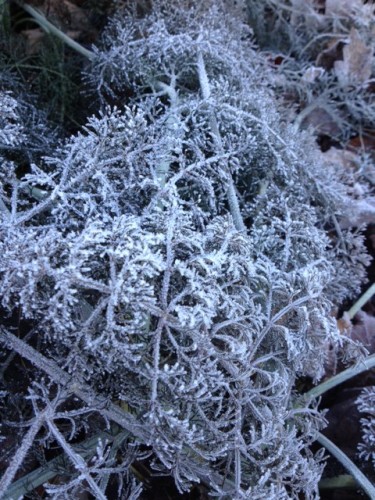by Kenan White | Apr 3, 2013 | Herbs |
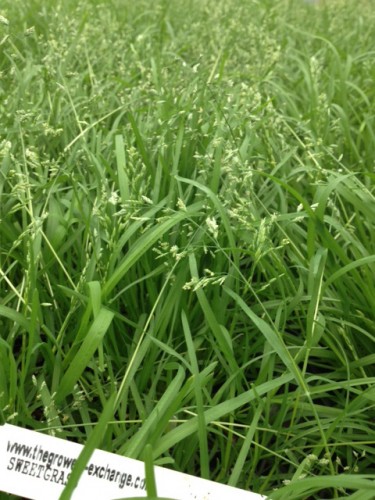
Sweet grass has long been considered a sacred plant for a variety of different cultures. One whiff of this aromatic beauty, and you’re certain to know why. It has a distinctive scent that you’ll never forget. It’s a fairly hardy perennial, and it’s as native to North America as it is to Europe. It reaches just 20 cm in height at its peak, but the leaves can stretch outward for quite a ways by the end of the growing season.
Traditional uses abound for this amazing plant. It was often used as incense, tea flavoring, a kind of tobacco, and even perfume. It was, and is, also used for basket making.
As phenomenal as it is, it’s actually harder than you may think to grow. Unless you already have a plant established, it can be fairly difficult to get some started in your yard. Only a fresh seed will actually germinate with this plant. I learned that bit the hard way. I purchased seeds for nearly two years straight, and they were almost always dead. I simply couldn’t get it to grow through a store-bought seed. The only way I could really get it going was by dividing my plants. It seems to take really well to that.
One year, I decided to try something a bit different – fresh seeds. I created an open flat of soil right next to my plants, then started splitting them open right over the soil. In what seems like mere minutes in my memory, I had created a new sweet grass plant.
Sweet grass has long had a close association with people, which is probably one reason why viable seeds are so hard to get these days. Like garlic and horseradish, humans tend to replant it everywhere, and nature has a way of knowing when to scale back on viable seed production.
There are few things quite as rewarding as sweet grass, though, so spend a bit of time experimenting with this very traditional plant on your own this season.
by Kenan White | Mar 27, 2013 | Herbs |
The red basil is letting me down this year. We’ve grown it successfully for three seasons, but it just doesn’t seem to be coming together this year.
If you know anything about red basil, it’s a fairly slow growing herb. Originally a native of tropical Asia, it offers a strong, warm flavor and added freshness to almost any dish. It also offers a serious nutritional punch because it’s packed with antioxidants, calcium, fiber, Vitamin A, and more. You’ll find many recipes using red basil in Thai cooking, but it’s much more than a cooking herb.
Red basil is nothing short of beautiful. In fact, throughout the US, it’s known primarily as an ornamental. With a strong flavor and scent, it’s the perfect addition to any garden, and there is some evidence that even suggests it works as a mosquito repellant.
As amazing as this little plant is, though, we’re having a hard time finding live, viable seeds anywhere. A quick search will reveal that this doesn’t seem to be its year throughout the U.S.
What’s happening to the red basil?
For more than three seasons, we’ve grown our own plants, harvested our own seeds, and this year, we barely hit fifty plants from the entire crop. As a gardener who build a business on a great set of green thumbs, I am at a loss for words with this one. The seeds simply won’t germinate.
Every cloud has a silver lining, though. The problem has not transferred itself to the green holy basil, so if your goal is simply basil this year, that’s stocked and ready to ship.
I’ll be doing some heavy research on this topic this summer, so stick with us for updates to the red basil conundrum.
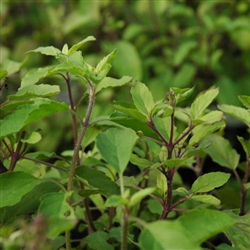
by Kenan White | Mar 22, 2013 | Herbs |
It’s official – Spring is finally here! Well, sort of. For many across the country, it may feel as if spring is never going to arrive. Here in Richmond, the chill is slowly beginning to recede, but we’re still expected to have temperatures in the forties over the course of the next week. New England got another 15 inches of snow earlier in the week, and our friends in the Midwest are expecting snow off and on through the end of the weekend.
Rest assured, though, spring is on its way, and our full crop of gorgeous herbs are absolutely ready to ship. Like you, we’re just waiting on the warm weather to start cooperating because these perfect varieties are at their peak now and ready for transplant.
Take a quick peek at a few of our stars:
Tarragon – Look at these gorgeous tarragon plants? The star of fresh herbs, if you do any cooking at all, this one has to be part of your herb garden. It has culinary powers few others do, and traditionally, we’ve heard about all sorts of cures made from this wonderful plant. From curing stomachaches to colic in little ones, it may still hold sway that we don’t understand. The trick with growing it, though, is to be careful with the moisture in your soil. It tends to grow better in a dry environment.
Lavender – Known for a combination of fragrance and beauty, there are lots of reasons to add this one to your garden. It’s been used as an antiseptic for years, and it can help with those irritating insect bites warmer weather so often brings use here in Richmond. It’s also a great insect repellant, and the scent is nothing less than divine.
Citronella – Speaking of insect repellent, this is we think you should certainly consider. It’s strongly-lemon scented leaves are perfect for keeping the mosquitoes away, and it’s the perfect patio plant if you’re running out of space. What’s more, though, is that this one is drought-tolerant, which is great for those who had such a dry summer last year.
We’re ready to ship as soon as you are. Drop by our virtual nursery now and starting planning your herb garden.

by Kenan White | Jan 24, 2013 | Gardening, Growing, Herbs, Life on the Farm, Seeds |
The Delta-T heating system we purchased will deliver heat where it matters most to plant development, the root zone. Everyone knows that a healthy plant must have a healthy root system. To insure all Growers Exchange herb plants fill their pot with vigorous roots, we will keep soil temperatures at 65 degrees to stimulate rapid root development.
To keep the green plant tops from growing too quickly, the air temperature in the greenhouse will be at 50 degrees at night. Growth is slower at cooler temperatures so the stems are thicker and stronger. The stem length between nodes is shortened, creating a symmetrical plant.
Bottom heat will also allow us to propagate more plants from cuttings. Many herbs like rosemary, lavender, and mint are best increased by vegetative propagation, also known as cloning. A mist system keeps the non-rooted plant stems hydrated until the warm soil promotes root growth. In about a month a new plant is ready to be re-potted.
Tropical herb plants like Lemon Verbena, Lemon Grass, Vietnamese Coriander, Dill, and Basil will also benefit from the new bottom heat. Try as we do, some days we can only keep the greenhouse but so warm. Wood fired space heaters warm the greenhouse air; but some winter days only so much heat is possible. We could also consider stone flooring that promotes underfloor heating and is able to retain heat well, allowing the plants to stay warm even when it’s cold outside. The bottom heat system, however, will act as a great attachment to the other options ensuring that our plants stay in their optimal temperature zones. Now we will be able to keep the root zone of these tropical herbs at their desired 65 degrees no matter what is happening outside.
As greenhouse growers, this new bottom heat is as exciting as Christmas! We will have plenty of herb plants ready for spring planting. The bottom heat helps the seedlings prepare for Spring. Winter is the best time to plan your herb garden. Don’t forget to order early, many herb plants are grown in limited quantity. And a tip from a greenhouse grower: have plants sent as early as your planting zone allows.
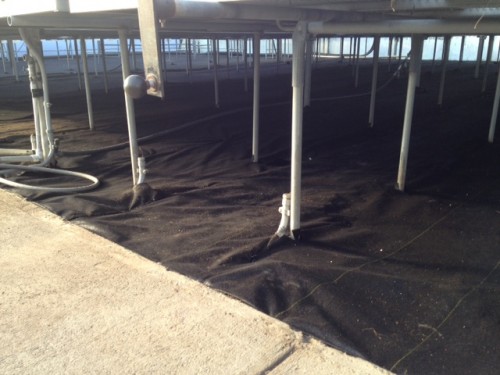
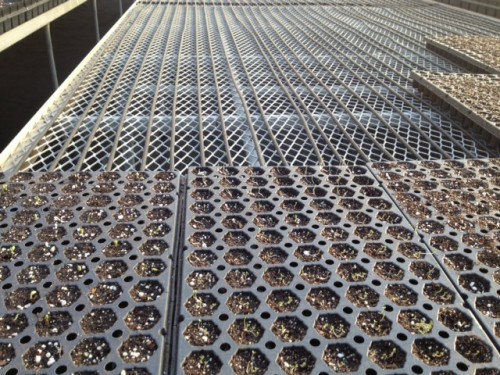
by Kenan White | Jan 17, 2013 | Basics, Gardening, Growing, Herbs, Seeds |
The Growers Exchange greenhouse staff is busy starting all the herb plants needed for our customer’s gardens this spring. Different plants are started by 3 different methods. Annual, biennial, and some perennial are easy to grow from seed. Basil, cilantro, arugala are examples of some herbs that grow quickly from seed. Italian parsley is slow, up to 3 weeks to germinate and another 4 weeks to grow to transplant size. This herb takes a long time grow from a seed, but there is no other way to obtain new plants. Anise Hyssop, Catnip, and Bergamot are examples of perennial herb plants that may take several weeks to germinate, but are still considered easy to grow from seed. A germination chamber is used to force seeds to sprout before their designated time; parsley goes from 21 to 5 days in the chamber. Seed flats must be taken out immediately after germination, as seedlings quickly die in the high humidity. Technically germination begins with the emergence of the radical. This is the first little white shoot tip to penetrate the seed shell, then germination is over and seedling growth begins. It doesn’t sound like much, if you think about it; emergence of the radical is one of the magic moments in nature. No one can fully explain or replicate a hard little thing that turns into a plant when water is added. Sowing seeds does leave the mind time to wander. And wonder!
Herbs that grow as a shrub, such as rosemary, lavender, and germander could be grown from seed, but would not produce a transplant for 1 or 2 years. To avoid the long seedling stage, Stem cuttings are kept under mist and have a heat source below keeping the root zone warm. The stems soon grow roots and a miniature version of the parent plant is soon ready to transplant. Other herbs such as Costmary defy these methods. Bible leaf plants grow from a rhizome which is divided into new plants by cutting a piece of root with a leaf bud. These divisions also grow a clone of the parent plant.
All these herb plants are on a schedule with someone’s garden. We time our plants to be ready for their new home early this spring.
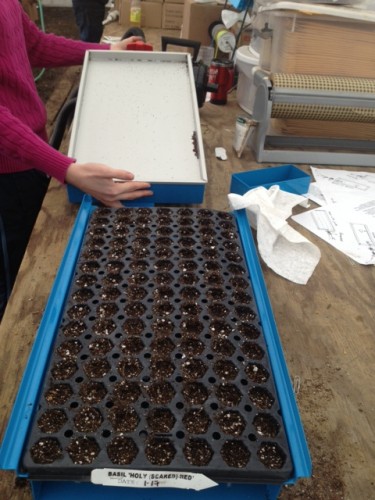
by Kenan White | Jan 9, 2013 | Basics, Gardening, Growing, Herbs |
We get many calls from people concerned about the foliage of their herb plants. Each herb is different as has different growing requirements and characteristics. Overall, it is safe to say almost all herb plants prefer full sun all day long as well drained soil. Meeting these two basic requirements will eliminate most problems growing herb plants.
The amount of sun needed for growth cannot be met in a window during winter months. The declining number of daylight each day signals that it is time for the plant to go dormant. Each plant has its own type of dormancy. Some die back to the ground and have no green showing at all until spring.
Lemon Balm, mints, and lovage are examples of herb plants that die to the ground in winter. Shrubby plants like rosemary, lavender, sage and thymes are green in winter, but growth is stopped until spring. Leafy plants such as parsley and cutting celery must be grown large enough before fall to sustain winter cutting. Keeping herbs in a sunny window in winter keeps them close by for cutting as needed; make sure to have enough plants to last until spring.
Watering herb plants is simple. Water your herbs as little as possible. Wet soil will cause root rotting fungus to grow; never let herb plants stand in a saucer of water; water logging will drown the roots. When the soil is dry all the way to the bottom; water sparingly – just enough to dampen the soil.
